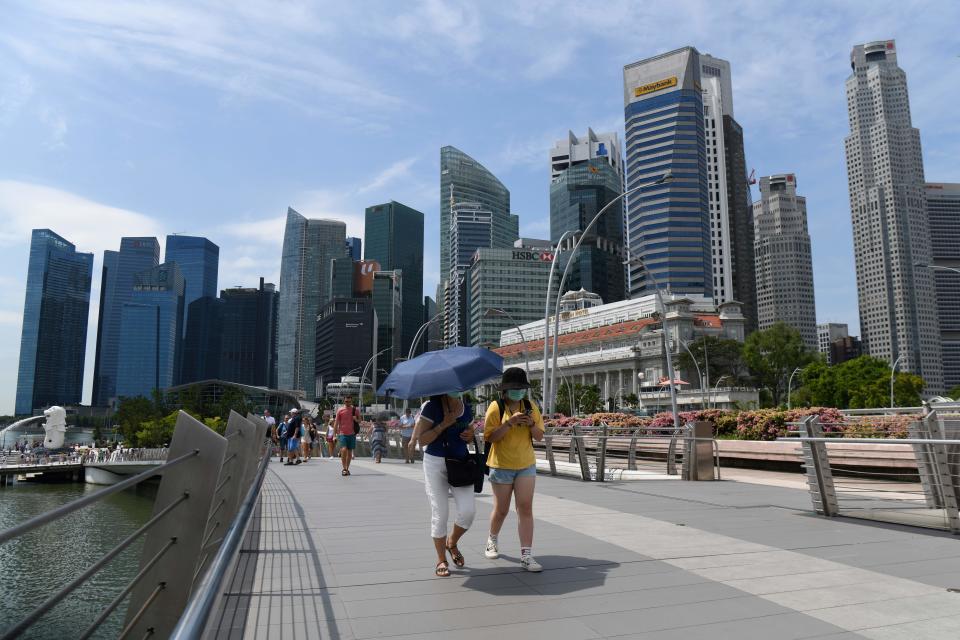Singapore plans biggest budget gap in more than two decades

By Michelle Jamrisko and Faris Mokhtar
(Bloomberg) -- Singapore will post its biggest budget deficit since at least 1997, pledging S$6.4 billion ($4.6 billion) in dedicated support for an economy being slammed by the coronavirus outbreak.
The deficit will widen to 2.1% of gross domestic product in the year through March 2021 from a projected 0.3% in the current fiscal year, Finance Minister Heng Swee Keat said Tuesday in Parliament. The median in a Bloomberg survey of economists was for a fiscal 2020 shortfall of 1.5% of GDP.
Faced with an election due by April 2021 and a virus outbreak that’s having a worse impact than SARS, the government is stepping up its support for an economy that was already under strain from last year’s trade tensions. The state will set aside S$800 million to fight and contain the coronavirus outbreak, and will provide two economic support packages totaling S$5.6 billion to assist businesses and consumers.
“This year we usher in a new decade, one marked by tectonic shifts in our operating environment, and major uncertainties,” Heng, who is also deputy prime minister, said in his budget speech in Parliament. The government is putting in every effort to “slow down the spread of the virus,” he said.
Singapore had been planning additional support for businesses hit by the ongoing U.S.-China trade war before the coronavirus outbreak set in earlier this year. The city state, which has more than 70 confirmed cases of the virus, downgraded its growth outlook on Monday as it braces for an economic impact that’s worse than the 2003 SARS pandemic.
“Such exceptional circumstances definitely call for a robust fiscal response,” said Irvin Seah, a senior economist at DBS Group Holdings Ltd. “The very prudent fiscal planning that we always abide to over the years has enabled us the ability to respond strongly in such a difficult period.”
The coronavirus package announced Tuesday dwarfs the S$230 million stimulus the government rolled out in the wake of the SARS outbreak.
Lee Hsien Loong@leehsienloong
#SGBudget2020 has extra significance as it provides critical support for Singaporeans & our economy as we deal with COVID-19. Let us continue to look out for one another & keep building Singapore together. – LHL bit.ly/2SX9UUH
Sent via Twitter Web App.
View original tweet.
Heng also outlined the following steps in his budget speech:
Economic Support
The bulk of the S$800 million support to fight the coronavirus will go to the Health Ministry. Of the S$5.6 billion economic support, S$4 billion will primarily go toward supporting businesses with wage costs. The rest will assist consumers by offering “additional, timely help to more households with cost of living,” especially for lower-income families.
Sectors directly affected by the coronavirus -- like tourism, aviation and food -- will get additional support such as property tax rebates and rental waivers.
GST
The government still plans to raise the goods-and-services tax by 2025, but won’t increase it next year, Heng said. He outlined an enhanced package of subsidies, worth S$6 billion, to support consumers when the GST increase does take effect. The majority of Singaporean families will receive offsets of at least five years’ worth to cover GST expenses. Lower- and middle-income Singaporeans and retirees remain eligible for additional support.
Foreign Workers
The proportion of mid-level skilled foreign workers in some industries will be lowered as the government continues to strike a balance between providing job opportunities for locals and retaining an open labor market. The ratio of maximum permitted S Pass workers to a company’s total workforce in construction, marine shipyard and process sectors will be lowered to 15% from 20% in two phases beginning in January 2021, Heng said. The government won’t reduce the threshold for manufacturers at this point, given the economic uncertainties, but intends to eventually do so, he said.
Cash Handouts
The government will provide a S$1.6 billion package to assist households with expenses “during this period of uncertainty." This will include a one-off cash payout of between S$100 and S$300, depending on income, for all Singaporeans aged 21 and above.
© 2020 Bloomberg L.P.

